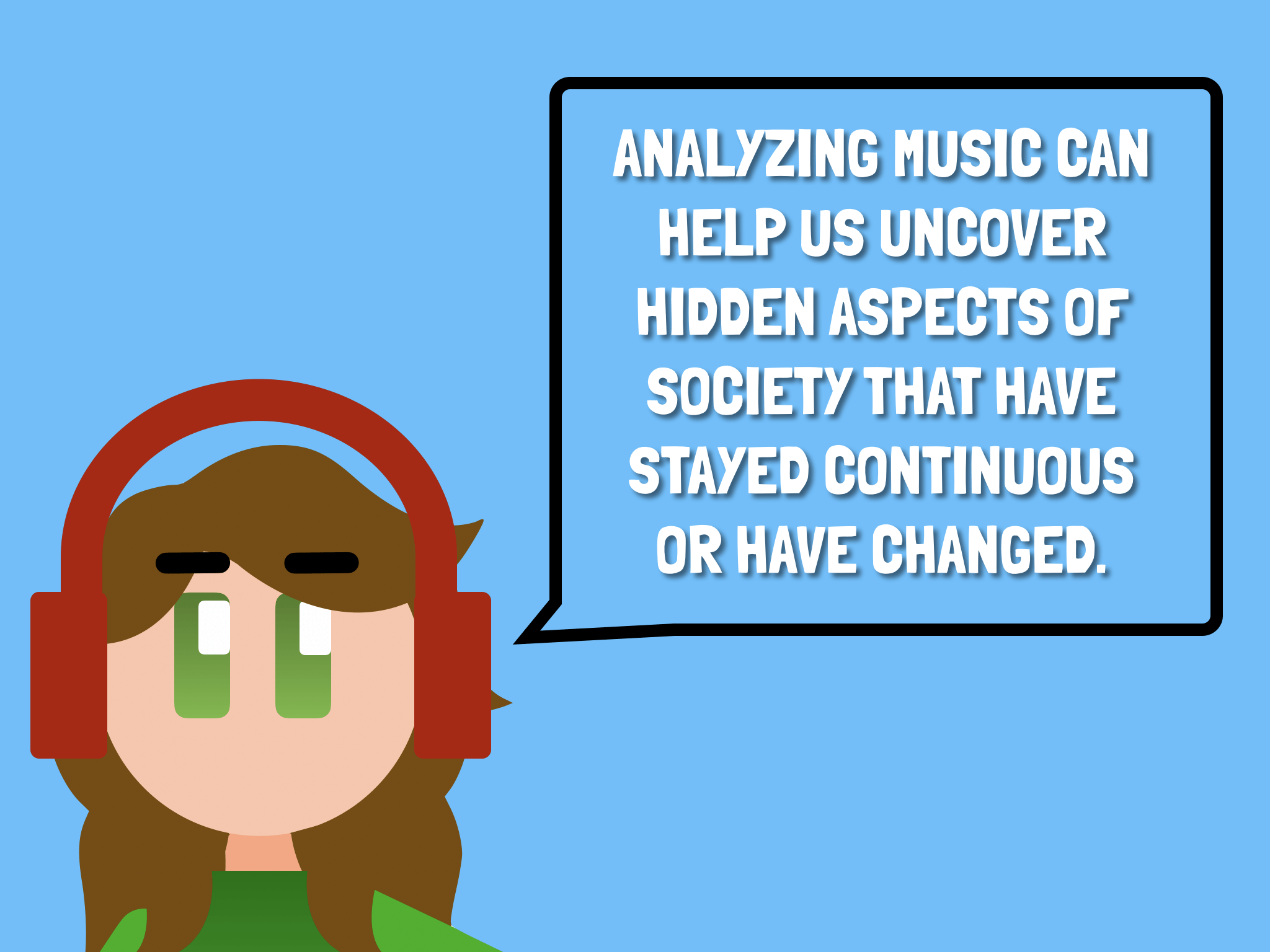Music is everywhere. It’s in our homes, at our stores and constantly playing from our personal devices. It’s also in every time; whether you look at the Victorian era or the 21st century you can find a variety of songs and musical artists to define that period. Recognizing this and how interwoven music is in our society is crucial as it can help us better understand history. Being something so fundamentally human and cultural, it can allow us to analyze the hidden aspects of continuity and change in our past that aren’t displayed in other historical records.

My Mixtapes
Over the past week, I have analyzed a number of historic songs both in class and on my own. Some of these I have noticed are particularly good windows into the society they were written in, and these are what I’ll be exploring today. Understanding that at any time in history things are simultaneously staying the same and changing, I will be analyzing songs that represent both of these aspects.
Changes

“Mustang Sally” by Mack Rice is an interesting song as it displays a different flavour of sexism than what we see today. While it still common for women to be objectified in music through lyrics, it is no longer tolerated to be as blatantly domineering and misogynistic as to compare a woman to a car. We can see that in how media such as this ad have received major backlash for doing this exact thing. I also find it interesting how the use of a lesser evil to mitigate a greater one has created different perspectives on this song. While feminists are unhappy with its obvious sexism, war supporters were happy there was something that could take the troops’ minds off war. This change overall has benefited society in my opinion as any stride towards equality for women is good, but I can understand the perspective of sexism at this time period not being the worst evil.

Five years after the release of “Mustang Sally” a very different kind of song came out. “What’s Going On” by Marvin Gaye was a raw, toned-down commentary on all the problems with the American society coming out of the 1960s. This was a massive change from the happy Motown sound from his Black predecessors and paved the way for musicians of colour to speak their minds moving forward. This was a good change in my opinion as Marvin was able to become a voice for people who didn’t have one and shattered the assumption that Black musicians couldn’t show their true feelings.

Last year in my chamber choir we sung the song “Rise Up” by Andra Day. It is a beautiful, simple and inspiring song that has been picked up by recent fights for racial equality, similar to how Marvin Gaye’s “What’s Going On?” was during his time. What I find interesting however is how it represents a massive stylistic change in music between these two time periods. While Marvin’s music was ambient, relied on percussion and not inertly melodic, “Rise Up” is direct, has a distinct acoustic sound and utilizes the four-chord progression which defines popular music of the 21st century.
Continuities

“Backlash Blues” by Nina Simone is a catchy yet challenging song to listen to as it directly speaks out on the plight of the coloured individual. It calls out many of the problems with racism in American society from the economic implications to the equality aspects in a raw and honest way. Although hard to listen to, these messages are not uncommon and have been echoed in music across time (you need look no further than Marvin Gaye or Andra Day). I see this continuity as rather unfortunate as it implies that artists have been calling for change for decades and yet racism is still very alive.
WARNING – Graphic Content:

“This is America” by Childish Gambino is yet another example of the continuity of racism, but a far more shocking one than the songs mentioned prior. This unique hip-hop sound paired with a graphic video aim to speak the same message that artists have tried to communicate for years but in a much more forceful way. If we use this as a case study of modern rap and hip hop music we could look at it as an example of change for this genre as a whole has become increasingly more explicit and aggressive. However, I think it is more powerful to use it as yet another example of the continuity of racism in our society. It has been ingrained in our lives for so many years that artists must push the bar further and further for us to even notice it.

On the polar opposite of “This Is America” is John Lennon’s “Imagine”. This song aims to promote societal change but in an extremely peaceful and idealistic way through lyrics about removing factors that divide us. It was popular upon release and still popular today due to the historical continuity of people looking for a brighter future amidst hardship. This song was released at the height of the Vietnam war and was a piece of art that could act as a beacon for a bright future amongst all the darkness. Today in the pandemic, we do the same thing by painting rocks with messages of hope for our future. It has always been a universal truth that humans use art to project a conflict-free future and “Imagine” is a great example of this.
Conclusion
Music can act as an excellent window into understanding our past, but we also must be careful. It is so cultural and contextual that one person’s favourite song might be another person’s background music. For example, I think that John Lennon’s “Imagine” is beautifully written and is an anthem for hope but others, such as this journalist, disagree. For this reason, I want to make it especially clear these examples of continuity and change are my opinion and these songs can be interpreted in a number of other ways.
I have thoroughly enjoyed this week as I love music and studying it. I have also enjoyed learning to use the Bear and all its unique features (especially the custom emoji tags!). I’m also starting to see the value of creating a proper Zettelkasten system as I am now making connections without even realizing it. I need to improve keeping up with my notes every night, but overall my system is working significantly better than it was at the beginning of this unit.
Sources
https://www.globalcitizen.org/en/content/music-that-has-changed-the-world/
The Global Citizen is ranked to have high factual reporting and only have a slight left bias:
https://mediabiasfactcheck.com/global-citizen/
